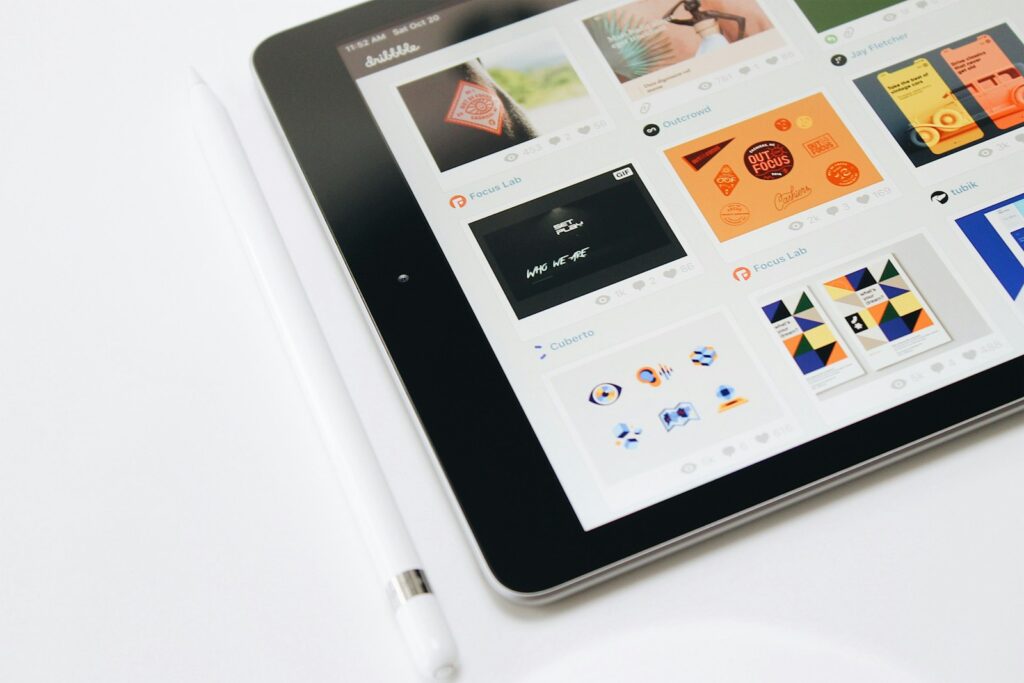
Creating a cohesive user experience (UX) on a website is an art that blends the technical aspects of website design with the creative flair of graphic design. When these two elements come together seamlessly, they create an engaging and intuitive environment that captivates users and encourages interaction. Here’s how you can combine graphic design and website design to craft a cohesive user experience.
Understanding the Role of Graphic Design in Web Design
Graphic design is about more than just making a site look attractive; it’s about communicating your brand’s message visually. Effective graphic design enhances usability by guiding users’ eyes to important content and creating an intuitive navigation flow.
Visual Hierarchy: This involves organizing elements in a way that naturally guides the viewer’s eyes from one piece of content to the next. Use size, color, and spacing strategically to highlight key information and create a flow that makes sense to users.
Brand Consistency: Ensure that your visual elements, such as logos, color schemes, and typography, align with your brand identity. Consistent branding across your website builds trust and recognition.
Harmonizing Aesthetics and Functionality
Balancing the visual appeal of your site with its functionality is crucial. A beautiful design is pointless if users find it difficult to navigate or if it doesn’t load properly.
Responsive Design: Your website should provide a seamless experience on all devices, whether it’s a desktop, tablet, or smartphone. Graphic elements need to be scalable and adaptable to different screen sizes.
Fast Load Times: Optimize images and graphics to ensure they don’t slow down your website. Compress files and use the appropriate formats (like SVG for logos and icons) to maintain quality without compromising speed.
Integrating Graphic Design Elements Effectively
Incorporating graphic design elements in a way that enhances usability involves a thoughtful approach. Here are a few strategies:
Consistent Color Scheme: Choose a color palette that reflects your brand and use it consistently throughout your site. Colors should not only be aesthetically pleasing but also functional, enhancing readability and highlighting key elements.
Typography: Select fonts that are not only visually appealing but also readable on various devices. Maintain consistency in font usage for headings, subheadings, and body text to create a unified look.
Imagery and Icons: Use high-quality images and custom icons to convey your message more effectively. Ensure that these visuals align with your overall design theme and add value to the user experience rather than serving as mere decoration.
Enhancing User Engagement Through Design
Design elements should encourage user interaction and engagement. This involves creating intuitive pathways and clear calls to action (CTAs).
Intuitive Navigation: Simplify your navigation menu and ensure that it’s easily accessible from any page. Use clear labels and organize content logically to help users find what they’re looking for quickly.
CTAs: Design buttons and links that stand out and invite action. Use contrasting colors and compelling text to encourage users to click and explore further.
Utilizing Graphic Design for Storytelling
Storytelling through design helps create an emotional connection with users. This can be achieved through a combination of visuals and content that together tell your brand’s story.
Hero Images and Videos: Use striking images and videos on your homepage to capture attention and convey your brand’s message instantly. These elements should be engaging and aligned with the overall tone of your website.
Visual Storytelling: Create a narrative with your design elements. Use a consistent style and theme to guide users through your site, much like chapters in a book. Infographics, animations, and interactive elements can enhance this experience.
Testing and Iterating
The process of combining graphic design and website design for a cohesive user experience doesn’t end once the site is live. Regular testing and iteration are key to maintaining and improving UX.
User Testing: Conduct usability tests to gather feedback on your design. Observe how users interact with your site and identify any pain points or areas for improvement.
Analytics: Use tools like Google Analytics to track user behavior on your site. Analyze metrics such as bounce rate, session duration, and conversion rates to understand how your design impacts user experience.
Conclusion
Combining graphic design and website design effectively requires a balance of creativity and practicality. By understanding the role of each element, harmonizing aesthetics with functionality, and continuously testing and iterating, you can create a cohesive user experience that not only looks good but also performs well. The end result is a website that not only attracts visitors but also engages and retains them, turning casual browsers into loyal customers.
